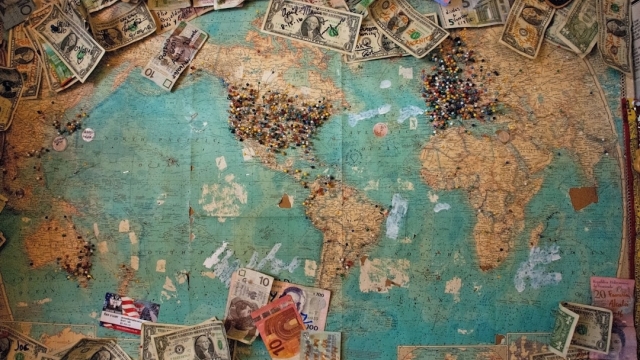
The rise of deepfake technology has undoubtedly sparked a wave of excitement and concern across the globe. With its ability to manipulate images, videos, and even audio, this groundbreaking technology has opened up a new realm of possibilities while also exposing potential dangers. Deepfake technology, powered by powerful algorithms and machine learning, allows for the creation of highly realistic and convincing visual and audio content that can be difficult to distinguish from the real thing. While the implications of such technology extend to various fields, including entertainment, politics, and more, they also bring to light a host of ethical concerns and societal implications. Let us delve deeper into the fascinating world of deepfakes, unveiling both their wonders and worries.
The Power of Deepfake Technology
Deepfake technology has emerged as a powerful tool that challenges our perception of reality. Its ability to manipulate and alter audiovisual content has opened up a world of possibilities, captivating and alarming users in equal measure. With its increasing sophistication, deepfake technology is reshaping the way we create and consume media.
One of the most remarkable aspects of deepfake technology is its capacity to generate incredibly realistic simulations. By leveraging advanced machine learning algorithms, it can seamlessly replace faces in videos, making it appear as though individuals are saying or doing things they never actually did. This capability has immense potential in the entertainment industry, enabling filmmakers to bring deceased actors back to life or present historical figures in a fresh and engaging manner.
Moreover, deepfake technology has also found its footing in the field of education. It has the power to create immersive and interactive learning experiences, allowing students to virtually interact with historical figures or experience firsthand simulations of complex scientific phenomena. By leveraging this technology, educators can enhance engagement and provide students with unique opportunities for exploration and understanding.
Deepfake technology is not limited to entertainment and education; it also holds potential in various fields such as marketing and advertising. With the ability to seamlessly integrate products and brands into targeted content, marketers can create highly personalized and captivating advertisements that resonate with consumers on a deeper level. By utilizing deepfake technology, brands can forge stronger connections and drive higher levels of customer engagement.
The power of deepfake technology is undeniable, but its rise also raises concerns and prompts important ethical questions. As this technology becomes more accessible and its capabilities continue to expand, it is crucial to address the potential misuse and harm it may cause. While deepfakes can undoubtedly be a force for positive change, it is essential to approach their development and deployment with caution and responsible use.
In the next section, we will delve into the challenges posed by deepfake technology and explore its implications in society. Stay tuned to uncover the wonders and worries surrounding this evolving technology.
The Potential Benefits and Applications
As deepfake technology continues to evolve, it presents a wide range of potential benefits and applications. From entertainment and creative industries to education and research, the possibilities seem boundless.
One of the most notable areas where deepfakes can be incredibly useful is in the film and entertainment industry. By employing this technology, filmmakers can seamlessly bring historical figures back to life or enable actors to portray characters that would otherwise be impossible. This opens up a whole new realm of storytelling possibilities, pushing the boundaries of creativity in visual effects.
Moreover, deepfake technology holds great promise in the field of education. Imagine sitting in a classroom and having the opportunity to learn from interactive virtual teachers, delivering lessons in an engaging and immersive way. By leveraging deepfakes, educational institutions can provide students with a more dynamic and personalized learning experience, making complex subjects easier to comprehend.
Additionally, deepfakes have immense potential in the field of research and development. Scientists and researchers can utilize this technology to simulate various scenarios and test hypotheses in a controlled environment. This could significantly accelerate the progress in fields such as medicine, climate science, and engineering, enabling scientists to explore possibilities and make breakthroughs more efficiently.
In conclusion, deepfake technology offers numerous benefits and remarkable applications across various industries. Whether it’s revolutionizing filmmaking, enhancing education, or advancing research, the potential of this technology is truly awe-inspiring.
Best Deepfake App
The Ethical Concerns and Implications
Firstly, deepfake technology raises significant ethical concerns regarding privacy and consent. With the ability to manipulate faces and voices, individuals can be easily impersonated without their knowledge or consent. This has profound implications for personal security, as malicious actors can exploit this technology for various nefarious purposes. Deepfakes can be used to create fake videos or audio recordings that can damage reputations, spread misinformation, or even incite violence. Therefore, it becomes crucial to establish clear regulations and guidelines to protect individuals from being targeted or harmed by deepfake technology.
Secondly, the rise of deepfakes poses a threat to trust and authenticity. In an era already plagued by fake news and online misinformation, the emergence of highly convincing deepfake content further challenges our ability to distinguish fact from fiction. The public’s trust in visual and audio evidence is at risk, as deepfakes can deceive even the most discerning eyes and ears. This erosion of trust has broader societal implications, impacting sectors such as journalism, politics, and criminal justice. It becomes imperative to develop robust detection methods and educate the public about the existence and potential impact of deepfakes to mitigate the spread of misinformation.
Lastly, deepfakes introduce ethical dilemmas in the realm of art and entertainment. While this technology opens up exciting possibilities for creativity and storytelling, it also raises questions about the boundaries of artistic expression and intellectual property rights. Deepfake-generated content blurs the line between reality and fiction, leading to debates around copyright infringement and the ethical use of someone’s likeness without their permission. As deepfake technology continues to evolve, it is crucial to strike a balance between artistic freedom, ethical considerations, and protecting the rights and well-being of individuals.
In conclusion, the ethical concerns and implications surrounding deepfake technology are multifaceted. From privacy and consent to trust and authenticity, and from fake news to copyright infringement, deepfakes pose substantial challenges that need to be addressed. The responsible and ethical development, regulation, and use of deepfake technology are essential to harness its potential benefits while safeguarding against its detrimental effects. By fostering a broader understanding of its implications and working towards comprehensive solutions, we can ensure a more secure and informed future.



